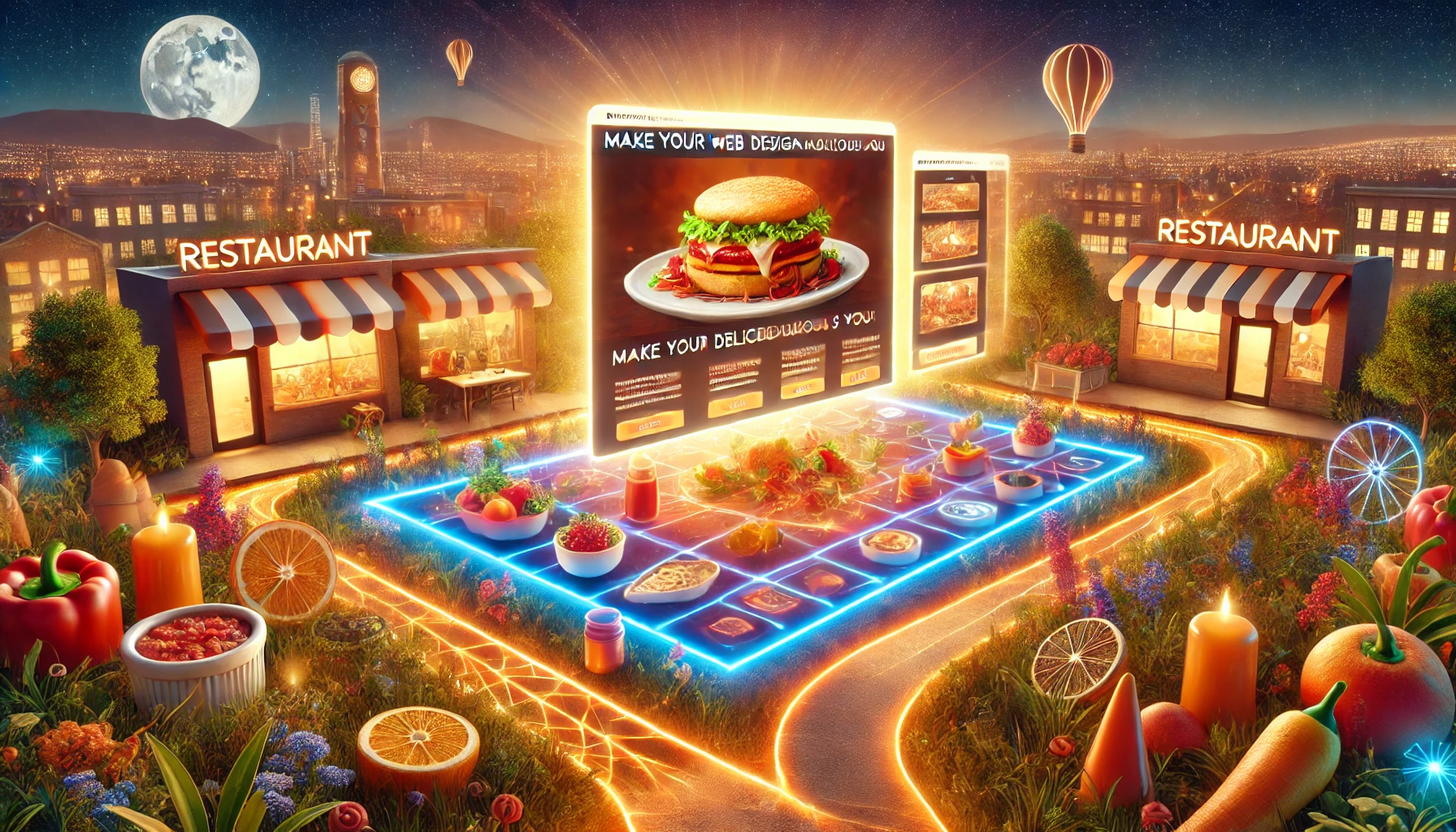Imagine scrolling through a restaurant’s website, eagerly searching for tonight’s dinner spot. You’re met with a slow-loading page, cluttered design, and blurry images. Frustration builds, and within seconds, you’re off to a competitor’s site.
This happens more often than you’d think. A poorly designed website can turn away hungry customers before they even step through the door. Whether you run a restaurant, food blog, or e-commerce store selling gourmet products, your website needs to do more than just look good—it must engage, guide, and convert visitors effortlessly.
This post will break down the secrets of web design for food-related businesses, ensuring your site not only looks stunning but also functions seamlessly.
Key Takeaways:
- How to create an engaging digital experience
- The role of accessibility and ethical design
- Real-world examples to inspire your website You’ll learn how to craft an experience that draws customers in, from accessibility and emerging tech to ethical design and global inspiration.
Let’s dive in and make your digital presence as mouthwatering as your food.
Capturing Taste with Pixels

The Role of Web Design in the Food Industry
Your website goes beyond being a digital menu; it’s the first taste of your brand. Studies show users form an opinion in just 0.05 seconds. Effective food web design builds trust, evokes emotions, and encourages interaction, reflecting the same passion you pour into your dishes.
In the food industry, this quick impression can mean the difference between a new loyal customer and a missed opportunity. A well-designed website visually communicates your brand’s identity—whether it’s a cosy local café or a high-end restaurant.
Elements like colour schemes, typography, and layout work together to evoke feelings that align with your brand. For instance, warm earthy tones may create a sense of comfort for a rustic bakery, while sleek, modern designs with bold colours can signify sophistication for a gourmet eatery.
Why It Matters:
- First Impressions: Users decide to stay or leave within 0.05 seconds.
- Emotional Connection: Your design influences customer perception instantly.
Moreover, intuitive navigation ensures that potential customers can find what they’re looking for without frustration. Clear calls-to-action (CTAs), strategically placed menus, and simple booking options enhance the user experience. A website should not only showcase delicious images but also offer seamless functionality—making it easy to browse the menu, book a table, or place an online order.
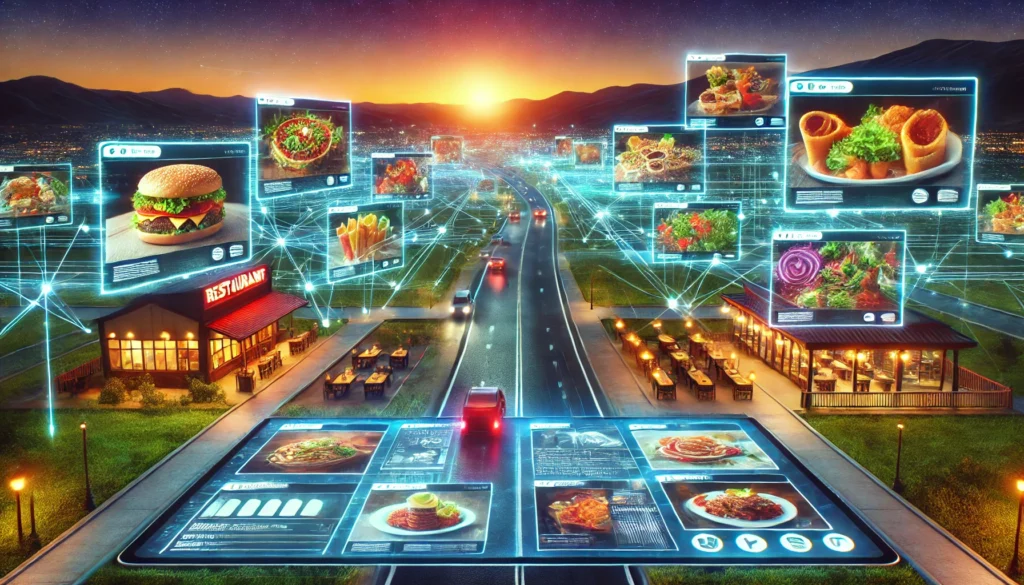
Another crucial aspect is mobile responsiveness. With over 60% of food-related searches happening on mobile devices, ensuring that your website looks and functions well on all screen sizes is essential. Fast load times, mobile-friendly layouts, and easy-to-tap buttons improve accessibility and user satisfaction, increasing the likelihood of customer conversions.
Ultimately, your website should tell your story, entice your audience, and guide them effortlessly toward taking action—whether it’s visiting your restaurant, placing an order, or sharing your brand with others. A thoughtful, engaging design can transform casual browsers into loyal customers.
Beyond Aesthetics: What Makes a Food Website Truly Engaging?
While gorgeous food photography can grab attention, it’s not enough. Great web design is a careful balance of beauty and functionality. Here’s what truly engaging food websites have in common:
Visual Storytelling: Use high-quality images to evoke emotions—think steam rising from a hot dish, vibrant colours of fresh produce, or candid shots of your team in action.
Consistent Branding: Colour schemes, typography, and layout should reflect your brand. A rustic farm-to-table café should feel different from an upscale sushi restaurant.
User-Centric Design: Easy navigation, clear calls-to-action (CTAs), and mobile responsiveness keep visitors engaged.
Example: Check out Spoonfed Atlanta for more insights on effective web design strategies tailored for food businesses. Their clean layout and bold food images guide users effortlessly, making the dining experience start the moment you land on their homepage.
Accessibility Is the Secret Ingredient Many Miss
Many food websites unknowingly exclude potential customers because they aren’t accessible. Accessibility isn’t just about compliance; it’s about inclusion. According to the World Health Organization, over 1 billion people live with some form of disability.
Quick Accessibility Wins for Food Websites
Alt Text for Images: Describe images clearly. Instead of “plate of food,” write “crispy golden chicken with roasted vegetables.”
High Contrast Colours: Ensure text is readable against background colours, especially for menus and buttons.
Keyboard Navigation: Make sure users can navigate your site without a mouse, which is essential for people with motor disabilities.
Before & After Example: Imagine a restaurant website with images but no alt text. A visually impaired user with a screen reader would hear nothing. Adding descriptive alt text transforms that silence into an appetising description, making them more likely to engage with your brand.
Emerging Technologies in Food Web Design
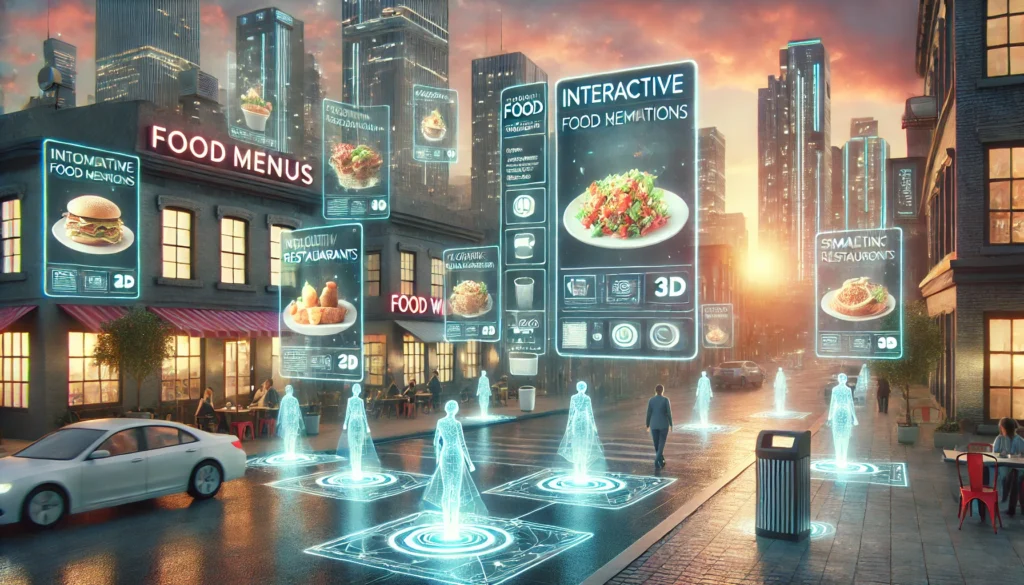
Innovations Driving Digital Dining Experiences
Technology is reshaping food websites. AI-driven personalisation tailors user experiences, suggesting dishes based on past behaviour. Augmented Reality (AR) lets customers “see” dishes before ordering.
Voice search optimisation ensures your restaurant pops up when someone asks, “Where’s the best vegan burger near me?” Embracing these tools keeps your site fresh and relevant.
One real-world example is Domino’s Pizza, which has embraced AI for dynamic ordering through chatbots, making online orders faster and more personalised.
Similarly, Kabaq, an AR food technology company, enables restaurants to present 3D models of menu items, increasing customer engagement and satisfaction.
These technologies not only enhance the user experience but also boost conversion rates by offering interactive and tailored experiences.
By integrating such technologies, food businesses can stand out, offering not just meals but memorable digital experiences that keep customers coming back.
Ethical and Sustainable Web Design: Yes, It’s a Thing
Just as diners care about sustainable sourcing, they’re becoming aware of digital sustainability. Websites contribute to carbon emissions through energy use, especially data-heavy ones.
How to Make Your Food Website More Sustainable:
Optimise Images: Compress files without losing quality to reduce load times and energy consumption.
Efficient Coding: Clean code loads faster, reducing server strain.
Ethical UX: Avoid dark patterns—manipulative design tricks that trick users into actions they didn’t intend, like sneaky subscription checkboxes.
Brands like Patagonia Provisions lead by example, reflecting their eco-friendly ethos in both their products and web practices.
Global Flavours in Web Design
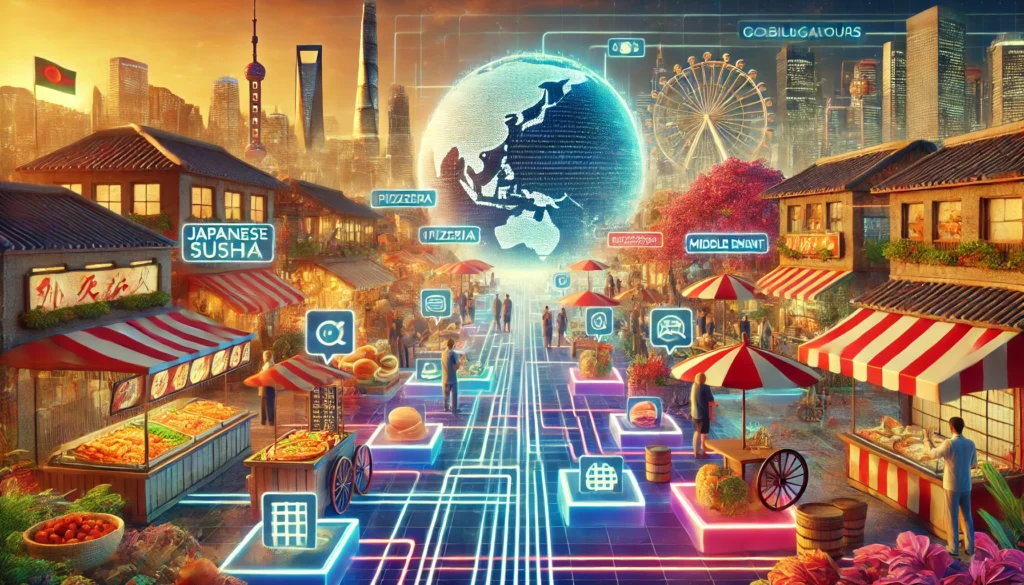
Lessons from Around the World
Food is universal, but web design isn’t one-size-fits-all. Japanese food sites often embrace minimalism, while Latin American brands favour bold colours and dynamic layouts. Tailor your design to reflect your cultural roots and appeal to diverse audiences. Add multilingual support if you serve international customers.
For instance, Nobu‘s global website adapts to cultural aesthetics across regions, maintaining a sleek, luxurious feel while localising content for each location.
Another great example is Guzmán y Gómez, an Australian-based Mexican food chain that uses vibrant, culturally-inspired designs reflecting Mexican street art, making their brand identity resonate globally.
These brands show that understanding cultural nuances in design can create deeper connections with diverse audiences, enhancing both user engagement and brand loyalty.
Why Mobile-First Web Design Is Essential
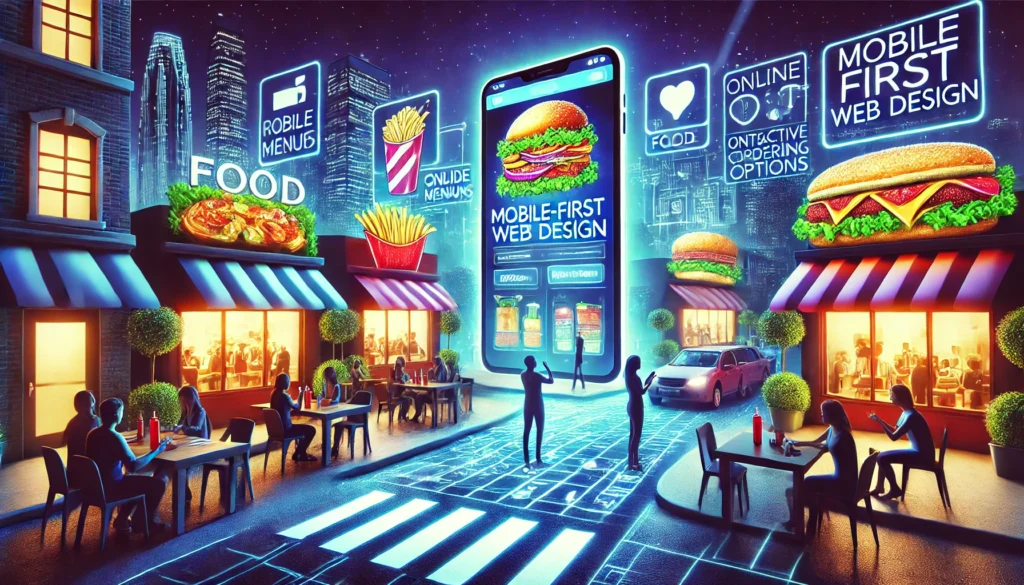
A Priority for Food Businesses
More than 60% of food-related searches happen on mobile devices. If your site isn’t mobile-friendly, you’re missing out. Prioritise fast load times, simple navigation, and easy-to-tap buttons. Make sure key info—like your menu, location, and contact details—is front and centre.
A real-life success story is Starbucks, whose mobile-first approach with their app and website has transformed customer experiences. The app’s intuitive design, mobile ordering feature, and rewards integration have significantly boosted customer loyalty and sales.
Similarly, Sweetgreen leverages mobile-optimised platforms, allowing users to customise orders seamlessly, contributing to their rapid growth in the fast-casual market.
Investing in mobile-first design is no longer optional—it’s the foundation for reaching and retaining your audience in the digital era.
Common Web Design Mistakes in Food Websites
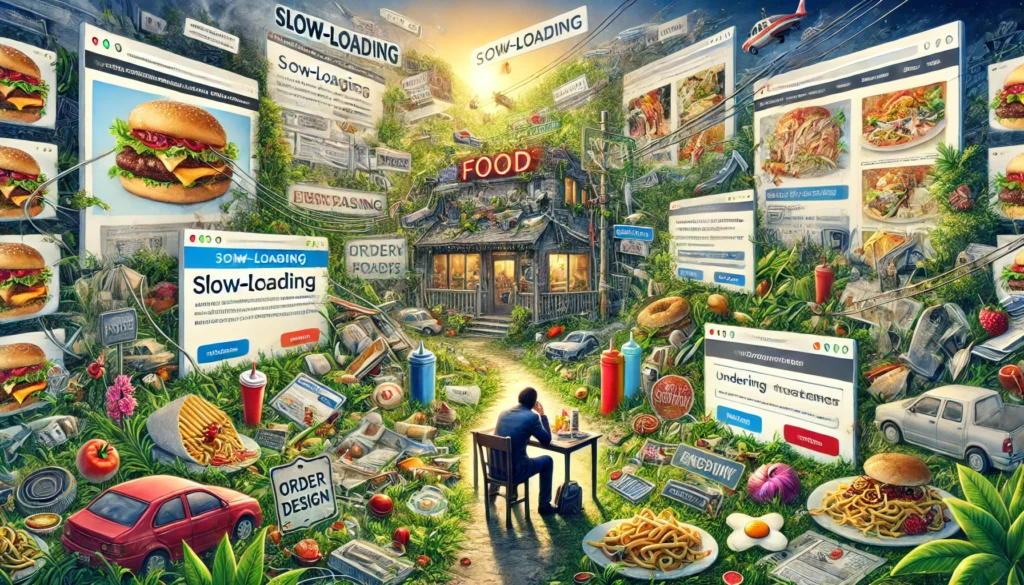
And How to Fix Them
Slow Load Times: Compress images and streamline code. Websites like Grubhub improved their load times by optimising image sizes, reducing bounce rates significantly.
Cluttered Navigation: Keep it simple. Clear, concise menus work best. Chipotle redesigned its website to focus on a clean, intuitive layout, improving the user experience and increasing online orders.
Neglecting SEO: Optimise for keywords like “best Italian restaurant in [City].” OpenTable leverages strong SEO practices, ensuring their partner restaurants rank highly in search results, driving more bookings.
Fixing these web design issues improves user experience, keeps visitors longer, and boosts conversions. Learning from industry leaders can inspire effective web design strategies tailored to your food business.
Make Your Web Design as Delicious as Your Food

Final Thoughts and Next Steps
Your website isn’t just an online menu; it’s the digital version of your front door, and thoughtful web design makes that first impression count. A well-designed site attracts customers, tells your story, and boosts your bottom line.
To recap:
- Prioritise visual storytelling with functional design.
- Ensure accessibility for all users.
- Embrace emerging tech like AI and AR.
- Incorporate ethical, sustainable practices.
- Optimise for mobile and local SEO.
Ready to spice up your web design? Let Spoonfed Atlanta help you create a site that’s as irresistible as your signature dish. Whether you need a full website overhaul or just a sprinkle of design magic, we’re here to turn clicks into customers.
Don’t let a bland web design hold your business back. Contact us today to start your redesign journey!
